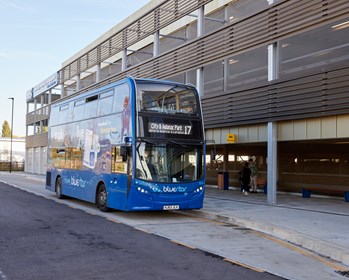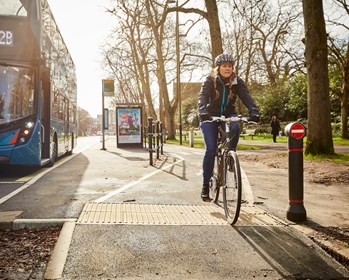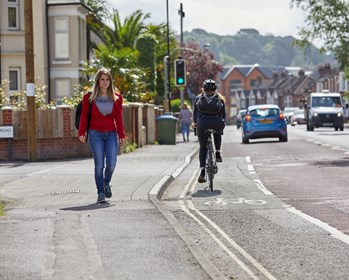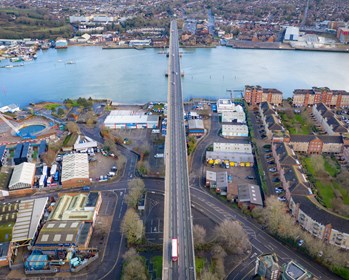What is Transforming Cities?
Transforming Cities Fund (TCF) was announced by the Government in 2017 for investment in sustainable and active travel to link City Centres with their suburbs and surrounding towns on a corridor approach. City Regions were invited to apply to an Expression of Interest in 2018, successful City Regions were then required to develop a Strategic Outline Business Case (SOBC) for submission in Autumn 2019. The programme was to deliver schemes by March 2023, this was then later extended to March 2025.
Southampton City Council (SCC) and Hampshire County Council (HCC) submitted a joint EoI for the Southampton City Region and were successful in joining the TCF programme along with 12 other City Regions in England. This included the Portsmouth City Region as the only other TCF region in South East England.
The Southampton City Region has a workday population of 430,000 (2011 census) covering all of Southampton City and Eastleigh Borough, the Waterside area of New Forest District, and south east portion of Test Valley Borough.
The Southampton City Region TCF bid was submitted in 2019, and in 2020 the bid was awarded £57m of Government funding towards the total £68.5m project, covering the three years to March 2024. The remainder of the funding came from local match contributions from the Councils and partners.
This was a significant level of capital transport funding to deliver joint plans and will have a transformative impact on people’s journeys by bus, walking and cycling in Southampton and Hampshire.
The objectives of the Southampton City Region TCF programme were:
- Rapid Bus Corridors that use priority and partnership to make travelling by bus easy, quick and attractive through combining new physical bus priority, enhanced bus stops, innovative technology, and modern, low-emission vehicles, the bus will be the travel mode of choice instead of the private car.
- Park & Ride for Southampton that provides people with a new facility for services to the Hospital and City Centre.
- Local Mobility Hubs that widen the choice and availability of shared e-mobility in local areas that combine access to a range of electric vehicles (cars, vans or bikes) with ‘click and collect’ services, coffee or public transport.
- Smart Technology that improves reliability of public transport through Connected-Intelligent Transport Systems to manage the transport network and provide priority to Rapid Bus through the worst congestion bottlenecks at traffic signals.
- A comprehensive Southampton Cycle Network that enables commuters and residents to make safe and easy journeys to work and for leisure, through a coherent network of direct, high-quality, segregated routes connecting suburbs and workplaces across the City Region.
- Active Travel Zones where walking and cycling become the norm for local neighbourhood journeys, co-designed and developed working in partnership with local communities.
- Investing in Better Interchanges including within the City Centre at Southampton Central station and at other rail stations and transport hubs.
- Transforming the quality of City Centre public spaces within the heart of the City into a much more vibrant, stimulating and people-focussed place, less dominated by moving or parked cars, supporting housing growth and where people enjoy visiting again and again, helping boost businesses and the local economy.
This approach will lead to these outcomes for TCF:
- Boost productivity by reducing the regional gap by 2%;
- Delivering measures and improvements that secures 11% more public transport journeys;
- Reduce end-to-end bus journey times and improve service reliability;
- Increase cycling’s mode share by 10% by delivering 80km of the SCN;
- Connect our most deprived communities with our economic drivers;
- Improve air quality; and
- Support the sustainable growth of Southampton City Centre, Eastleigh, New Forest and Test Valley.
In the tiles below, you can find out about the corridors and component schemes we invested in:







